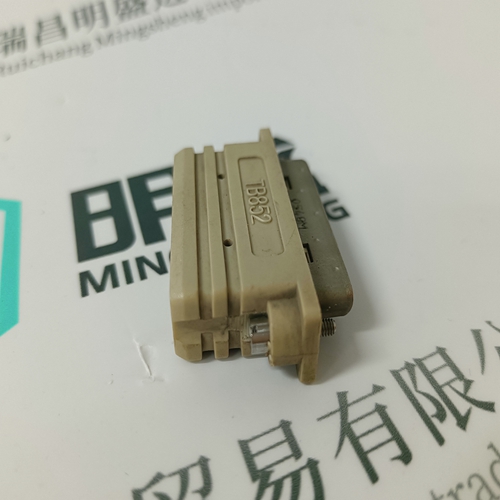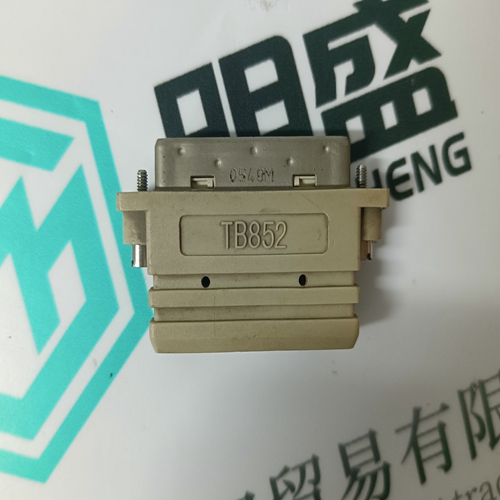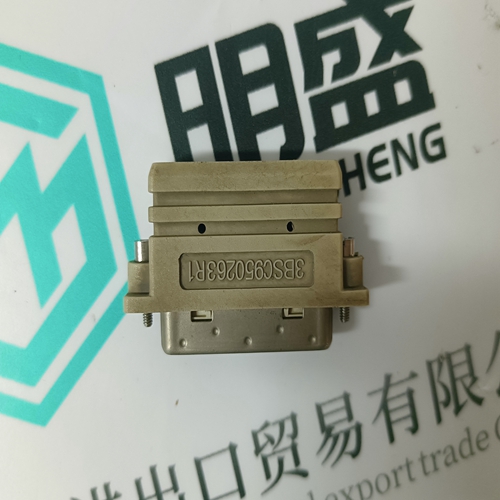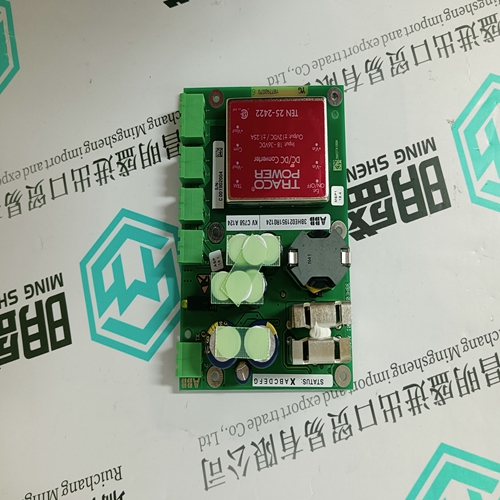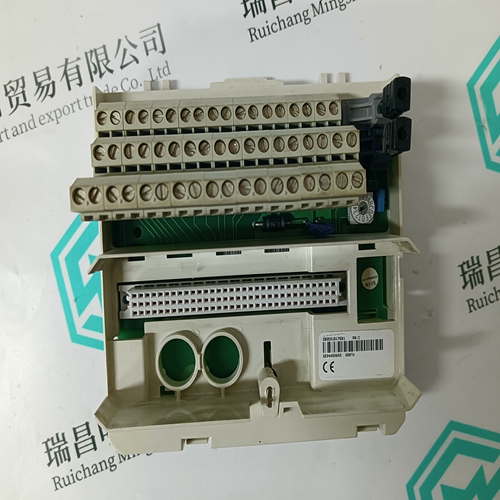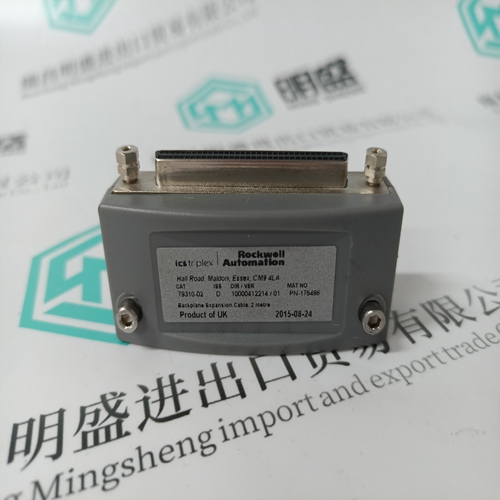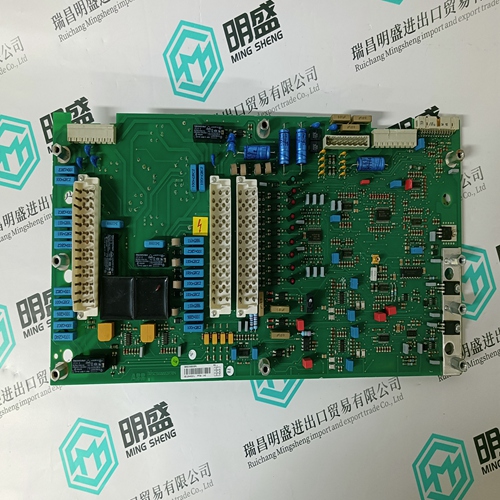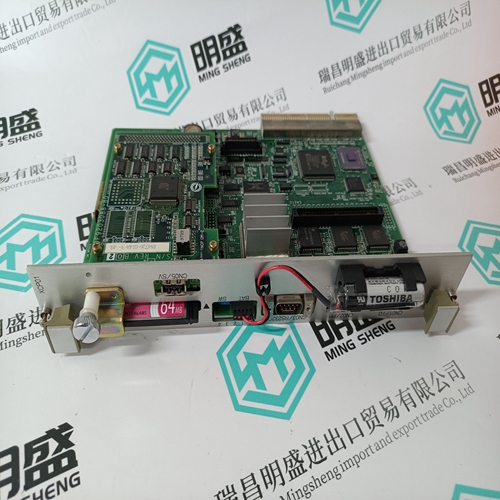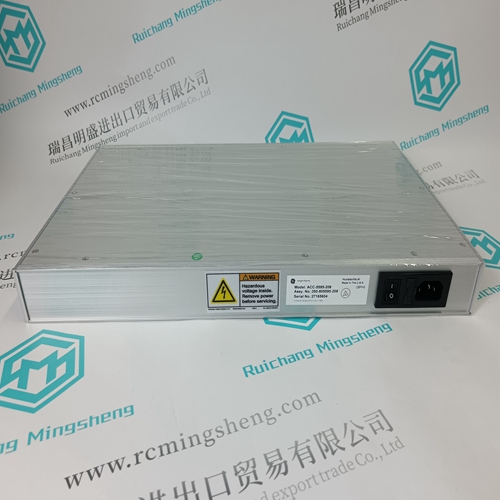Home > Product > DCS control system > TP852 3BSC950263R1 base module
TP852 3BSC950263R1 base module
- Product ID: TP852 3BSC950263R1
- Brand: ABB
- Place of origin: The Swiss
- Goods status: new/used
- Delivery date: stock
- The quality assurance period: 365 days
- Phone/WhatsApp/WeChat:+86 15270269218
- Email:stodcdcs@gmail.com
- Tags:TP852 3BSC950263R1base module
- Get the latest price:Click to consult
The main products
Spare parts spare parts, the DCS control system of PLC system and the robot system spare parts,
Brand advantage: Allen Bradley, BentlyNevada, ABB, Emerson Ovation, Honeywell DCS, Rockwell ICS Triplex, FOXBORO, Schneider PLC, GE Fanuc, Motorola, HIMA, TRICONEX, Prosoft etc. Various kinds of imported industrial parts
TP852 3BSC950263R1 base module
This controller circuit achieves a high level of safety with little effort. It most effectively uses the monitoring features built into the drive system. Typical uses: • if the KDV 4.1 supplies feed drives only; •if asnychronous drives and feed drives are operated with one KDV 4.1. Power off occurs simultaneously with the initiation of emergency stop. The energy contained in the drives is transformed into heat. The KDV 4.1 bleeder resistor can take up a maximum of 100 KWs over a five minute period. Shutting down of the drives takes precedence over protecting the bleeder resistor against overload. Frequent consecutive and arbitrary emergency stops (e.g., when commissioning) can damage the KDV 4.1 and are not permitted. The dc-bus short circuit always stops synchronous motors by braking them regardless of whether the drive electronics are still functioning or not. The link circuit short circuit only snaps in when there is a fault in the drive. If the emergency stop button is hit, then the asynchronous primary drives will also brake. In an emergency stop, or with a signal from the monitoring devices of the KDV 4.1 (e.g., mains failure), the drive electronics will brake the drives positioncontrolled at maximum torque.
Operating Characteristics
In exceptional cases, when large amounts of energy (spindle drives) are transformed into heat during braking and the danger of a thermal overload of the bleeder resistor is present. The bleeder resistor can be loaded with a maximum of 100 kWs over a five-minute period. Typical application: • when one KDV 4.1 operates asynchronous drives and feed drives. The first thing that an emergency stop does is initiate the braking of the drives. Power shutdown is delayed. Drive energy is fed back into the mains. Drive energy is only transformed into heat in the event of a power failure or drive trouble. The dc-bus short circuit always stops synchronous motors by braking them, regardless of whether the drive electronics are still working or not. The dc-bus short circuit only snaps in with drive problems. Should the emergency off button be pressed, then there will also be a braking of the asynchronous primary drives. There will be a position-controlled braking of the drives by the drive electronics at maximum torque in an emergency stop or due to a signal from the control monitors in the KDV 4.1 (e.g., power failure.).The controller enable signals of the drives are immediately switched off in the event of an emergency. This causes the set-point value of all attached drives to be internally set to zero. There is a controlled braking of the drives. The power supply is shutdown delayed over the period of time it takes to brake the asynchronous drives. The power is immediately shut off with a drive fault message from the KDV 4.1 (Bb1-contact), a fault message from the CNC controller (servo-fault), or if the final limit switch is overrun.The controller enable signal of the drives is also switched off by an auxiliary contact of the mains contactor, and the dc-bus short circuit snaps in.
